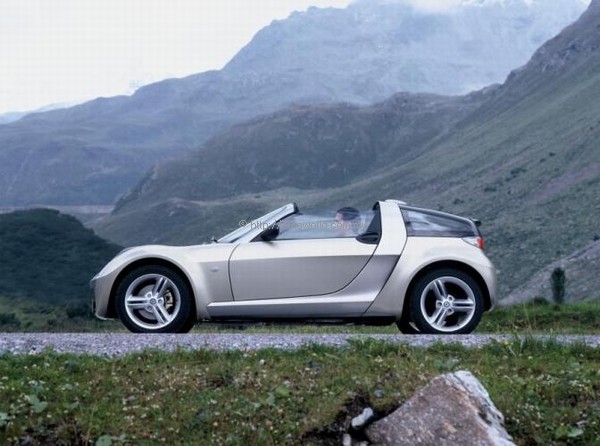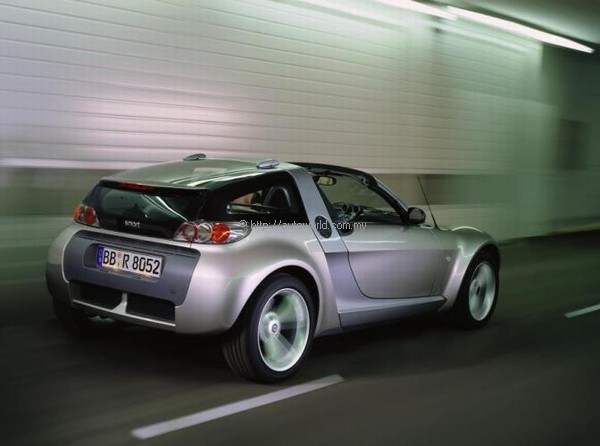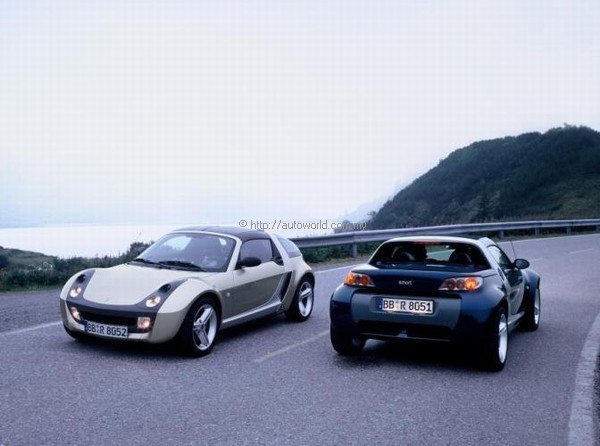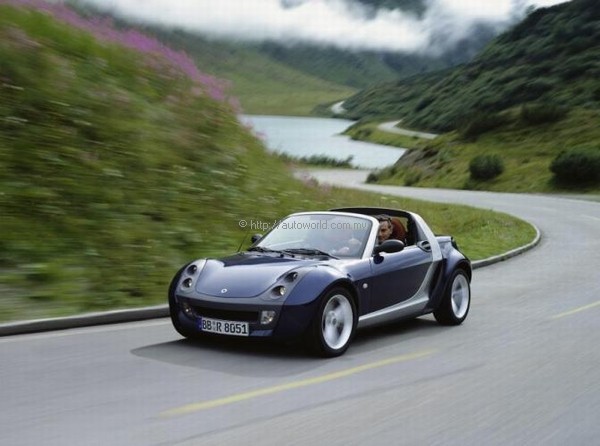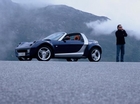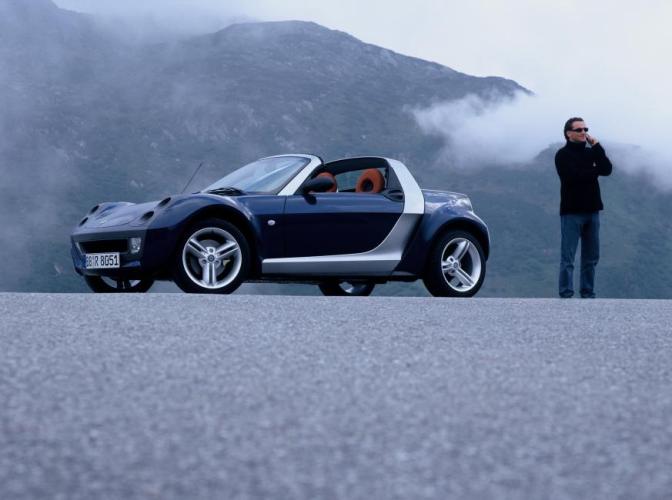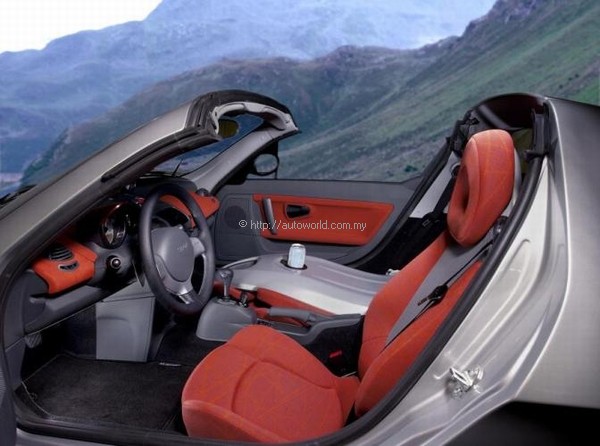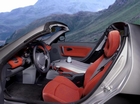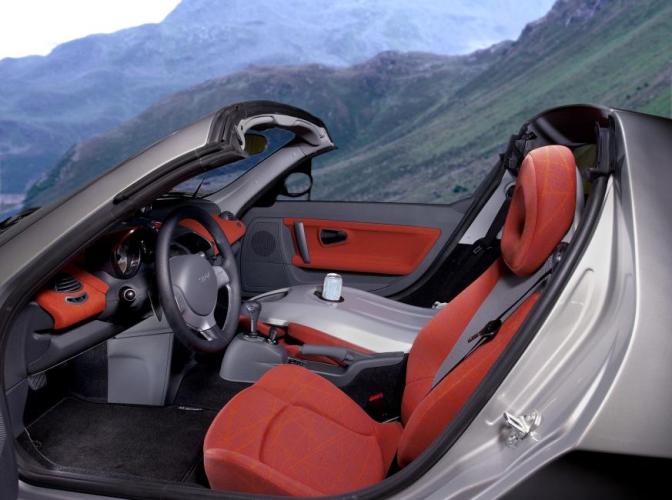Smart Moves
With sales of the new smart roadster and smart roadster coupé to commence in Europe in April 2003, the company (which is a subsidiary of DaimlerChrysler AG) believes the segment of the compact and purist roadster is being revived. This segment has not existed in such a form since the 1950s and 1960s of the last century.
The smart roadster and smart roadster-coupé take up the features of the smart city-coupé and smart cabrio and in this combination, they reinterpret the segment of the purist roadster in form and design, coupled with today’s demands for safety and comfort.
The dynamic, agile two-seaters are claimed to offer a unique motoring experience where the focus is not purely on reaching the destination, but also on the journey there.
The short body overhangs, pronounced body-contoured wheelhouses, generously dimensioned wheels and low vehicle height give the cars a sporty appearance. The designers attached great importance to balanced proportions with an elongated front lid and a passenger compartment set a long way back. Their goal was a modern interpretation of classic roadster features.
Contrasting areas at the front and rear with integrated lamp units together with a characteristic radiator grille demonstrate the development of design features specific to smart.
The steel structure visible in the door sill, B-pillar and roll bar areas signals safety awareness. The plastic panelling is a sign of robustness, suitability for everyday use, ease of repair and a lightweight construction.
The design of the interior is characterised by a modular construction, the use of identical fabrics for the instrument panel and door trim and formal independence of the control elements.
A size concept with compactness and low centre of gravity as priorities means that the smart roadster and smart roadster-coupé are not only extremely compact and fun to drive but can also be very comfortable and suitable for everyday use.
Thanks to a wheelbase of 2360 mm (Kancil= 2280 mm) and tracks of 1357/1392 mm, the roadster has the ideal prerequisites for markedly agile handling. The weight distribution to the front and rear axle is 44:56 percent.
The occupants’ low seating position allows a total vehicle height of just 1192 mm. With a vehicle length of 3427 mm and a width of 1615 mm (Kancil length = 3365 mm, width = 1405 mm), it has still been possible to create two luggage compartments, one of 59 litres in the front and the other of up to 189 litres behind (roadster coupe).
Hard suitcases or clothes bags plus various small items can be stowed under the smart roadster’s flat boot lid. The glazed rear section of the smart roadster-coupé extends the usable volume so that there is space for a suitcase, a clothes bag and a sportsbag, for example. When the hardtop is taken off it can also be stowed in the rear luggage compartment. Special customised luggage which is part of the ‘smartware’ programme is also available.
With an engine output of around 60 kW (82 bhp) and a weight of around just 790 kgs, the smart roadster and smart roadster-coupé offer a power/weight ratio which is extremely good compared with that of other cars – giving a positive effect on the handling performance. Whereas roadsters of the 1950s and 1960s were relatively light with weights of under 1000 kgs, the engine power rarely exceeded 45 kW (61 bhp).
The TRIDION safety cell, with a weight of just 192 kgs, is also the basis for the precise handling and the excellent suspension characteristics. Its sturdy architecture does not have the cabriolet ‘shaking’ which is common in many such cars, even when driving on extremely rough roads. And finally crash safety also benefits greatly from the high structural stability.
Finally, like the smart city-coupé and smart cabrio, plastic bodypanels also form the outer skin of the smart roadster and smart roadster-coupé. This material, which is much lighter than steel, is used in the front and rear ends, wings and doors.
The powder-coated TRIDION safety cell remains visible in the area of the door sill, B-pillars and roll bar as a visual representation of the two-colours and safety concept typical of the smart brand. Like the smart city-coupé and smart cabrio this concept has proved to be robust in everyday use and enables easy repairs in the event of damage. The bodypanels are simple and therefore inexpensive to replace.
The smart roadster will initially be offered with 60 kW SUPREX turbocharged petrol engine with a capacity of 698 cc and torque of around 110 Nm. A basic version with less engine power will also be available in the and smart-Brabus GmbH will also offer an exclusive and extremely sporty variant of the smart roadster.
The smart roadster has the same sequential automatic transmission as the smart city-coupé and smart cabrio – in a further optimised form. The sporty close-stepped ratios have been adjusted to the increased engine power and vehicle performance. In connection with this, it was also possible to further optimise the gear-change sequence of the automatic transmission.
The smart roadster is also equipped with the electronic stability program (ESP) as standard. This enables selective intervention by the brake system to stabilise the car. In addition, ESP offers anti-stall assist and brake assist functions as well as cornering brake control – regulation of the braking pressure on specific wheels when braking in curves.
With a roof system consisting of a soft top and a hardtop which can be used together or alternatively, the smart roadster and smart roadster-coupé offer their owners maximum open-air driving pleasure. As well as a two-piece, removable plastic hardtop that can be stored in the rear compartment, an electrically-operated folding soft top is available as an option for both the smart roadster and the smart roadster-coupé.
The hardtop is divided lengthways in the middle. It covers an area 750 mm long and 1000 mm wide. The roof segments can be removed with a few quick movements, packed into special moulded plastic parts and stowed away. The components weigh a total of just 10 kgs and are made of fibreglass-reinforced polyurethane foam.
The soft top can be opened to any desired position with a rocker switch on the centre console, even whilst driving, and closed again by pressing the button. It only takes approximately 10 seconds to fully open the soft top which slides back under the roll bar to the luggage compartment. When the soft top is down the driver retains full vision through the rear window.
Modelled on the smart cabrio, the smart roadster and smart roadster-coupé also have removable side roof bars. When the soft top is fully open these bars can be removed and stowed in the front luggage compartment. For safe, scratch-proof and space-saving stowage, the bars fit into a system consisting of moulded parts and recesses in the plastic lining of the luggage compartment.
Smart cars are available in some Asian markets, including Singapore and Hongkong but for Malaysia, it seems unlikely they will be offered officially since the price will be high due to the present import duty structure.




